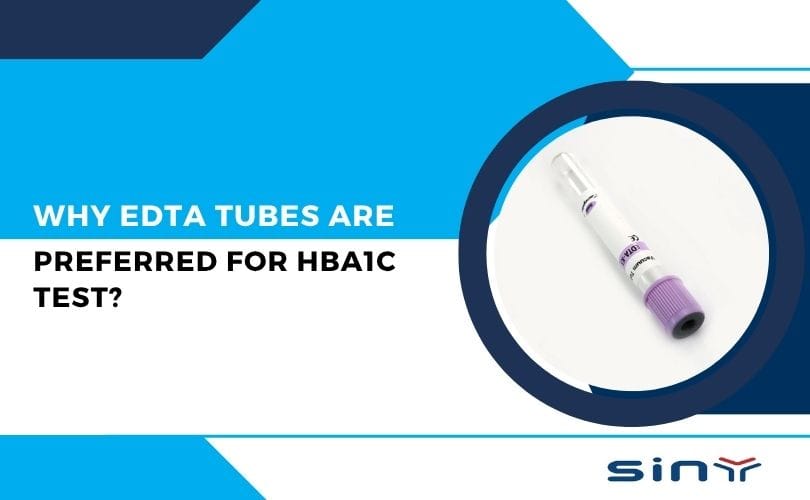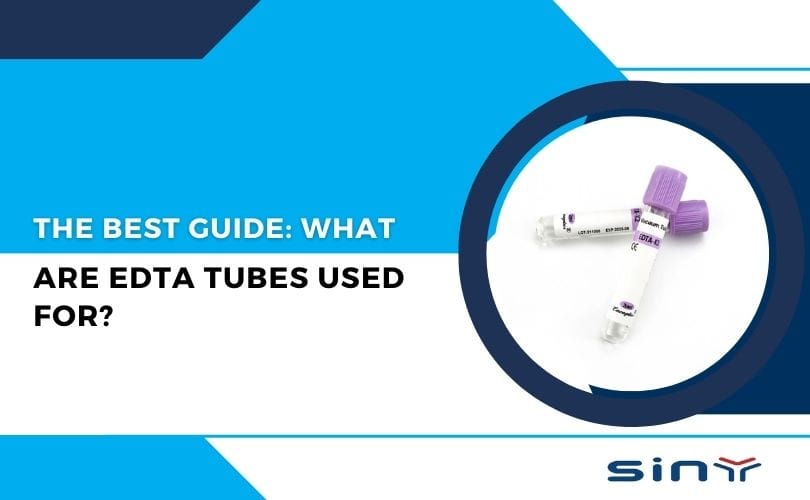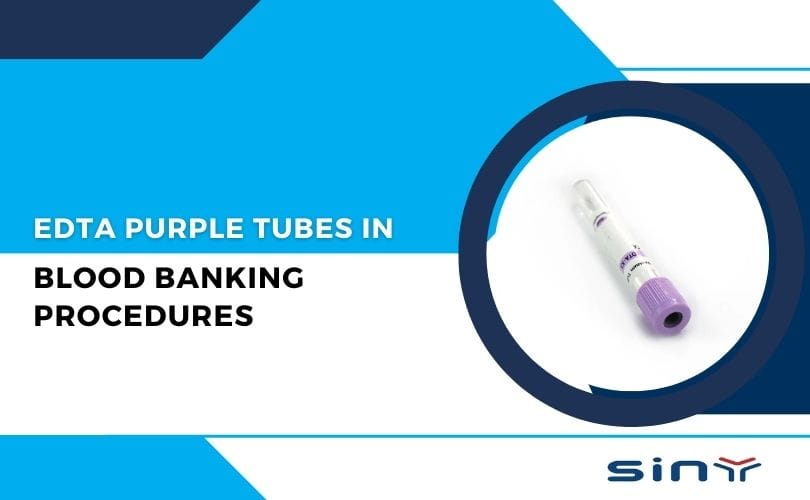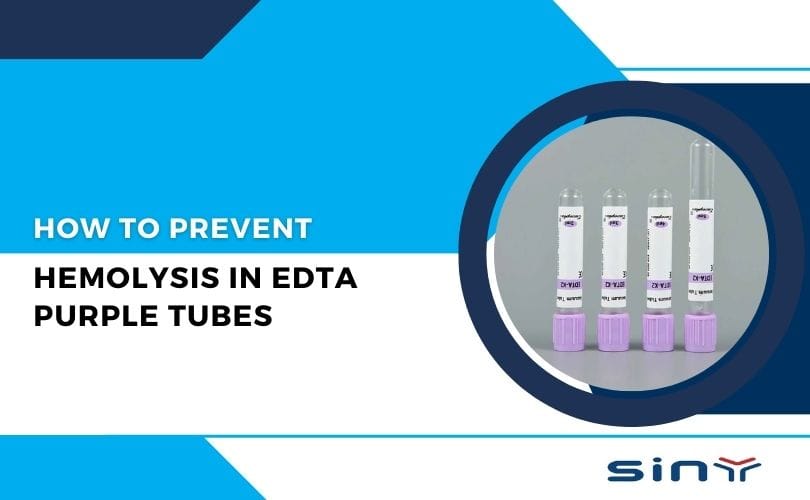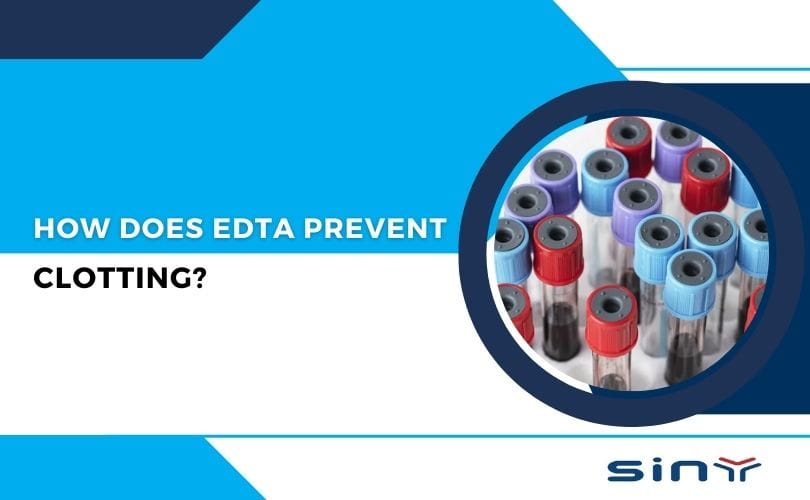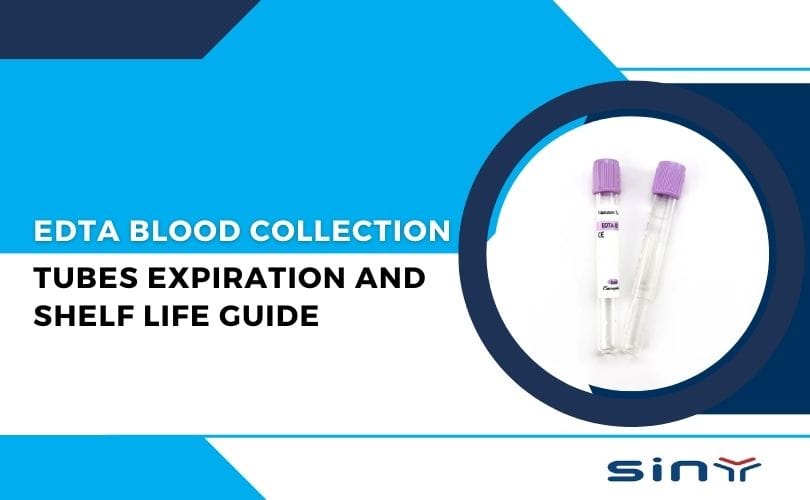In diabetes management and diagnosis, the HbA1c test is a critical laboratory marker that reflects the average blood glucose level over the past 2–3 months. To ensure accurate and stable results, the choice of blood collection tube is crucial. Laboratories worldwide recognize and adopt EDTA tubes (purple cap tubes) for HbA1c testing. As a result, EDTA tubes are preferred for the HbA1c test, which has become a standard practice.
. In this blog, we will explore why EDTA tubes are favored, their advantages, and how they contribute to reliable HbA1c results. For more information on EDTA tubes, visit EDTA Tubes for Blood Collection.
What Are EDTA Tubes?
EDTA (Ethylenediaminetetraacetic acid) tubes are specialized blood collection tubes that contain an anticoagulant to prevent blood clotting. They are easily identifiable by their purple or lavender tops, which are standardized across laboratories worldwide. EDTA works by binding calcium ions in the blood, which are essential for the clotting process. This ensures that the blood sample remains in a liquid state, making it ideal for various hematological tests, including the HbA1c test. To learn more about the types of EDTA tubes, check out EDTA Tube Product Category.
Why Are EDTA Tubes Preferred for HbA1c Testing?
The EDTA Tubes for HbA1c Test measures the percentage of hemoglobin that is glycated, reflecting average blood glucose levels over the past 2-3 months. Here’s why EDTA tubes are the go-to choice for this test:
- Prevention of Blood Clotting
EDTA tubes ensure that the blood sample remains unclotted, which is crucial for accurate HbA1c measurement. Clotted blood can lead to erroneous results, as it may alter the concentration of glycated hemoglobin. - Stability of Hemoglobin
EDTA preserves the integrity of hemoglobin, preventing degradation or denaturation. This stability is essential for maintaining the accuracy of the HbA1c test over time, even if the sample is not analyzed immediately. - Consistency Across Laboratories
The use of EDTA tubes is standardized globally, ensuring consistent results across different laboratories. This standardization is vital for reliable comparisons of HbA1c levels over time. - Minimized Interference
EDTA tubes minimize interference from other substances in the blood, such as lipids or proteins, which could otherwise affect the HbA1c test results.
For tips on handling EDTA tubes to ensure top-quality results, visit Top Quality Control Tips for Using EDTA Tubes.
Why Choose EDTA Tubes for HbA1c Testing
Stable Anticoagulant Performance for Accurate Results
EDTA (Ethylenediaminetetraacetic acid) binds calcium ions to prevent blood clotting, keeping the blood sample intact during collection and transport. Compared with other anticoagulants, EDTA better preserves cell morphology and reduces the risk of hemolysis.
High Sample Stability to Extend Testing Time Window
Whole blood samples collected in EDTA tubes remain stable for HbA1c measurement for up to 24 hours at room temperature, reducing errors caused by transportation delays or batch testing.
Compatibility With Mainstream Testing Systems
Most HbA1c test kits and analyzers recommend EDTA whole blood as the sample type, ensuring consistent results across different laboratories.
K2-EDTA Is the Preferred Variant
While both K2-EDTA and K3-EDTA can be used, K2-EDTA is more common and provides better preservation of cell shape without dilution effects.
Comparison: Why EDTA tubes are preferred for HbA1c test Over Other Tubes
- Compared to Heparin Tubes: Heparin prevents clot formation by inhibiting thrombin activity. However, for HbA1c testing, its stability and compatibility are not as reliable as EDTA, and some testing platforms do not recommend its use.
- Compared to Citrate Tubes: Citrate tubes are mainly used for coagulation tests. The dilution effect of citrate may impact HbA1c accuracy.
- Compared to Fluoride Tubes: Fluoride inhibits glycolysis and is suitable for blood glucose testing, but it may slightly affect HbA1c measurement and is not recommended by most HbA1c testing systems.
Overall, EDTA tubes are preferred for HbA1c test because they offer superior anticoagulant performance, better cell preservation, greater sample stability, and high compatibility with analytical systems.
Why EDTA Tubes for HbA1c Test Are the Gold Standard
There are many types of anticoagulants used in blood collection tubes—heparin, citrate, fluoride oxalate—but for HbA1c testing, EDTA consistently outperforms them. Here’s why:
Unmatched Stability of Hemoglobin
EDTA preserves hemoglobin integrity for longer periods compared to other anticoagulants. This ensures the HbA1c percentage remains unchanged even if there’s a delay in processing.Minimal Interference with Assays
Many modern HbA1c measurement methods—like HPLC, immunoassays, and enzymatic assays—are calibrated specifically for EDTA-treated samples.Superior Cell Morphology Preservation
If the red blood cells break down (hemolysis), the HbA1c results can be skewed. EDTA helps maintain cell structure, ensuring accurate readings.International Standardization
Leading organizations, including the NGSP and IFCC, recommend EDTA tubes for HbA1c testing, reinforcing their global acceptance.
You can learn more about EDTA tube handling protocols from this detailed guide on quality control tips.
Advantages of Using EDTA Tubes for HbA1c Testing
The benefits of using EDTA tubes extend beyond their anticoagulant properties. Here are some additional advantages:
- Ease of Use: EDTA tubes are user-friendly and compatible with most automated analyzers, streamlining the testing process.
- Cost-Effective: They are affordable and widely available, making them a practical choice for laboratories.
- Versatility: In addition to HbA1c testing, EDTA tubes are used for various other tests, such as complete blood counts (CBC).
To explore more about the versatility of EDTA tubes, visit What is an EDTA Tube?.
How EDTA Works: The Science Behind the Tube
EDTA binds with calcium ions—an essential cofactor in the clotting cascade—rendering them unavailable for clot formation.
Chemical Action:
EDTA = C₁₀H₁₆N₂O₈
Chelates Ca²⁺ → prevents fibrin clot formation.
By halting coagulation, EDTA ensures the sample remains homogenous, allowing HbA1c testing without interference from clotting artifacts.
This chemical stability is one reason manufacturers like Siny Medical continue to refine EDTA tube production for optimal performance in clinical settings.
How to Properly Use EDTA Tubes for HbA1c Testing
To ensure accurate HbA1c results, proper handling and usage of EDTA tubes are essential. Here’s a step-by-step guide:
- Correct Tube Selection: Always use purple-top EDTA tubes for HbA1c testing. These are specifically designed for hematological tests.
- Proper Blood Collection: Fill the tube to the recommended volume to maintain the correct blood-to-anticoagulant ratio.
- Gentle Mixing: Invert the tube gently 8-10 times immediately after collection to ensure thorough mixing of the blood with the anticoagulant.
- Storage and Transportation: Store the sample at the appropriate temperature (2-8°C) and transport it to the laboratory promptly.
For more details on blood collection techniques, visit Purple Top Blood Collection Tube.
Handling and Storage Tips for EDTA Tubes in HbA1c Testing
Even the best tube can’t guarantee accuracy if mishandled. Here’s what laboratory professionals recommend:
Proper Fill Volume – Always fill to the indicated mark to maintain correct blood-to-EDTA ratio.
Gentle Mixing – Invert the tube 8–10 times immediately after collection.
Storage Temperature – Keep at 2–8°C if testing is delayed; stable for up to 7 days.
Avoid Freezing – Freezing causes red cell lysis, affecting HbA1c values.
Timely Processing – For highest accuracy, analyze within 24–48 hours.
You can view detailed EDTA tube product handling info here.
Summary
EDTA tubes are the gold standard for HbA1c testing due to their ability to prevent clotting, preserve hemoglobin integrity, and ensure consistent results. Their ease of use, cost-effectiveness, and versatility make them an indispensable tool in modern laboratories. By following proper handling and storage protocols, healthcare professionals can rely on EDTA tubes to deliver accurate and reliable HbA1c results, ultimately aiding in effective diabetes management.
For more information or to purchase EDTA tubes, visit EDTA Tube or Contact Us. For additional resources, check out Sinymedical on YouTube and Sinymedical on Made-in-China.
FAQs
Can other anticoagulant tubes be used for HbA1c testing?
Technically possible, but not recommended. EDTA tubes are standardized and validated for accuracy, whereas others can cause variability.
How long is blood stable in an EDTA tube for HbA1c testing?
Up to 7 days at refrigerated temperatures (2–8°C), but best results are within 48 hours.
Are there different types of EDTA tubes?
Yes—K₂EDTA and K₃EDTA. For HbA1c, K₂EDTA is generally preferred.
Do EDTA tubes affect other tests?
Yes—some biochemical tests requiring serum should not use EDTA tubes due to calcium chelation.
Can EDTA tubes be reused?
No. They are single-use only for sterility and accuracy.

